- Introduction
- Background
- The Landslip Preventive Measures Programme (LPMP)
- The Landslip Prevention and Mitigation Programme (LPMitP)
- Dealing with Landslide Risk Arising from Man-made Slopes
- Dealing with Landslide Risk Arising from Natural Hillsides
- Special Studies Related to Landslip Prevention and Mitigation
- Expenditure
Introduction
This report is prepared to provide progress updates on the landslip prevention and mitigation studies and works undertaken by the Geotechnical Engineering Office (GEO) of the Civil Engineering and Development Department. It is issued on a half-yearly basis since October 2003 to provide information on the progress of the studies and works. This report covers progress up to 31 March 2025.
Background
In the 1960's and early 1970's, geotechnical input on site formation works was very limited. The rapid development of Hong Kong in this period has brought about a large stock of potentially substandard man-made slopes.
The GEO (known as the Geotechnical Control Office before 1991) was set up in 1977 to provide geotechnical control on new developments and redevelopments, and to develop strategy in dealing with the large stock of potentially substandard man-made slopes. The designs of new slopes which have been built since then have generally been checked by the GEO to ensure that they conform with the required safety standards. Up to 2010, substandard Government man-made slopes were upgraded systematically under the Landslip Preventive Measures Programme (LPMP). From 2010 onwards, the work was extended to include landslide risk mitigation for natural hillside under the Landslip Prevention and Mitigation Programme (LPMitP).
The Landslip Preventive Measures Programme (LPMP)
The LPMP was launched in 1977 to deal with the large stock of potentially substandard slopes affecting existing developments in accordance with a risk-based priority ranking system. The studies and works under the LPMP were initially undertaken by GEO in-house staff. In 1991, streamlined procedures were introduced to boost the output of slope studies. A programme was commenced in 1992 to use private sector resources to improve the progress of the LPMP.
As part of the implementation of the recommendations of the Slope Safety Review Report issued by the then Works Branch (now Development Bureau) and endorsed by the Executive Council (ExCo) in 1995, the GEO received increased resources to further accelerate the LPMP. On 1 April 1995, the GEO launched the 5-year Accelerated LPM Project to upgrade about 800 Government man-made slopes and to carry out safety-screening studies on about 1,500 private man-made slopes.
The 10-year Extended LPM Project endorsed by ExCo in 1998 was launched in 2000 on completion of the 5-year Accelerated LPM Project. This 10-year Extended LPM Project further boosted the level of LPM output in terms of upgrading of substandard man-made slopes affecting existing buildings and major roads. The 10-year Extended LPM Project upgraded about 3,100 substandard Government slopes and carried out safety-screening studies on about 3,300 private man-made slopes. This amounts to about 4 times the output before the commencement of the 5-year Accelerated LPM Project.
The Landslip Prevention and Mitigation Programme
Upon completion of the LPMP in 2010, the overall landslide risk from man-made slopes had been substantially reduced to less than 25% of that existed in 1977, reaching an "As Low As Reasonably Practicable' (ALARP) level'1 that is commensurate with the international best practice in risk management. However, there are still remaining landslide risk that poses a hazard to existing buildings and important transport corridors. If investment in slope safety was not maintained, landslide risk would increase again with time due to slope degradation, population increase and encroachment of more urban development on steep hillsides, and potential impacts of extreme rainstorm events as a result of more frequent and more severe rainfall due to climate change. This will cause, in addition to risk to life, significant economic losses and social disruption as a result of road blockages and building evacuation due to landslides, thereby compromising sustainable development of the society and Hong Kong's reputation as a modern smart city and tourist hub.
In end 2007, the ExCo and Legislative Council (LegCo) supported the launching of the Post-2010 Landslip Prevention and Mitigation Programme (LPMitP), which is a rolling programme, to dovetail with the LPMP in dealing with the landslide risk arising from both substandard man-made slopes and vulnerable natural hillside catchments. To cope with the increasing landslide risk due to more frequent extreme rainstorm events, the Government needs to adopt a more pre-emptive and strategic approach. With the support of financial allocation and manpower resources, the annual output targets of the LPMitP are progressively increased starting from 2025 to contain the landslide risks to within the "ALARP' level:
-
- to carry out upgrading works for substandard Government man-made slopes from 150 to 200;
- to conduct safety-screening studies for private man-made slopes from 100 to 130; and
- to implement risk mitigation works for vulnerable natural hillside catchments from 30 to 40.
1 The landslide risk cannot be completely eliminated, and the government needs to strike a balance between the level of risk and the cost. The "As Low As Reasonably Practicable' (ALARP) level means that the risk should be reduced as much as possible until the cost of any further risk mitigation measures is grossly disproportionate to the benefit gained based on the cost-benefit analysis.
Dealing with Landslide Risk Arising from Man-made Slopes
Catalogue of Slopes and Maintenance Responsibility of Slopes
For the effective management of the risk of a large stock of man-made slopes, the GEO has set up a Catalogue of Slopes to provide an inventory of sizeable man-made slopes in Hong Kong. The first version of the Catalogue of Slopes prepared in 1977 and 1978 focused on slopes in the main urban areas of Hong Kong and Kowloon and contained about 10,000 slopes. However, the original Catalogue of Slopes did not include all slopes formed before 1977, or many new slopes that have been formed since. In July 1994, the GEO commenced a project entitled "Systematic Identification and Registration of Slopes in the Territory" to compile a new catalogue of all sizeable man-made slopes in Hong Kong. The project was completed in September 1998. Since then, the slope cataloguing exercise has been continuing on a regular basis to include newly constructed or newly identified slopes that meet the slope registration criteria. There are now altogether about 61,000 slopes in the Catalogue of Slopes. A comprehensive Slope Information System (SIS) containing pertinent information on the slopes in the Catalogue of Slopes has been developed. The SIS is accessible by the public through a computer terminal on the 7th floor of the Civil Engineering and Development Building at 101 Princess Margaret Road, Kowloon. The slope information is also available on the Hong Kong Slope Safety Website (http://hkss.cedd.gov.hk) since March 1999.
All slopes need to be maintained, including old slopes and new slopes that are built to current standards. Slope owners have a particular interest in the data recorded in the Catalogue of Slopes because they are responsible for maintaining their slopes in a safe condition. The Lands Department commenced a project entitled "Systematic Identification of Maintenance Responsibility of Slopes in the Territory (SIMAR)" in June 1996 by engagement of consultants to set up a register of slope maintenance responsibility for all man-made slopes in the Catalogue of Slopes. A computerized Slope Maintenance Responsibility Information System has been set up for public access in Lands Department since December 1999 (http://www.slope.landsd.gov.hk/smris/index.html).
Preliminary Studies of Man-made Slopes
About 35,000 pre-GEO slopes (slopes in existence before the establishment of the GEO in 1977) in the Catalogue of Slopes had undergone Preliminary Studies. A Preliminary Study essentially consists of a site reconnaissance during which time the consequence of failure is assessed and a subjective judgement is made of the likelihood of preventive measures being necessary. While the main purpose of a Preliminary Study is to establish the priority for Detailed Study, it also allows slopes with immediate and obvious signs of danger to be identified, so that any necessary works can be initiated immediately to safeguard public safety.
The designs of post-GEO slopes (slopes built after the establishment of the GEO in 1977) have generally been checked by the GEO. Basic information like the consequence of failure for a post-GEO slope is collected and registered in the Catalogue of Slopes. Hence, post-GEO slopes do not require Preliminary Studies.
Detailed Studies of Man-made Slopes
Batches of potentially substandard man-made slopes affecting existing developments are selected for Detailed Studies under the LPMP/LPMitP in a priority order as determined by a risk-based priority ranking system. This system takes account of the relative risk-to-life posed to the community (i.e. the relative likelihood of slope failure and impact to the community caused by slope failure) and will also be enhanced to systematically deal with the landslide risk arising from substandard man-made slopes of potentially high social impact (e.g. slopes abutting sole vehicular access to residential areas). A Detailed Study comprises a stability assessment of an existing slope to decide whether upgrading works are needed. It is based on a desk study, an interpretation of the site setting from aerial photographs, site observations, stability analysis, and if necessary, ground investigation.
Where 'high-priority' Government slopes are found to be below current safety standards, they will be upgraded. For a private slope where prima facie evidence can be established that it is liable to become dangerous, a statutory Dangerous Hillside (DH) Order will be served by the Buildings Department upon GEO's recommendation, to require owners to investigate and, if found necessary, upgrade their slope. If ground investigation is required to confirm whether or not upgrading works are necessary, the requirement to carry out the ground investigation is normally passed to the private owners by the DH Order served by the Buildings Department.
A report on a Detailed Study may:
-
- recommend upgrading works for Government slopes,
- recommend further investigation and/or upgrading works for private slopes by the service of a statutory DH Order by the Buildings Department on private owners,
- recommend other specified action (e.g. a private owner is advised by an Advisory Letter), or
- conclude that upgrading works are not required provided the slope is maintained in accordance with the requirements given in Geoguide 5: Guide to Slope Maintenance.
A breakdown of the progress of the Detailed Studies on man-made slopes (the detailed studies on private slopes are referred to as safety-screening studies) is shown in Figure 1.
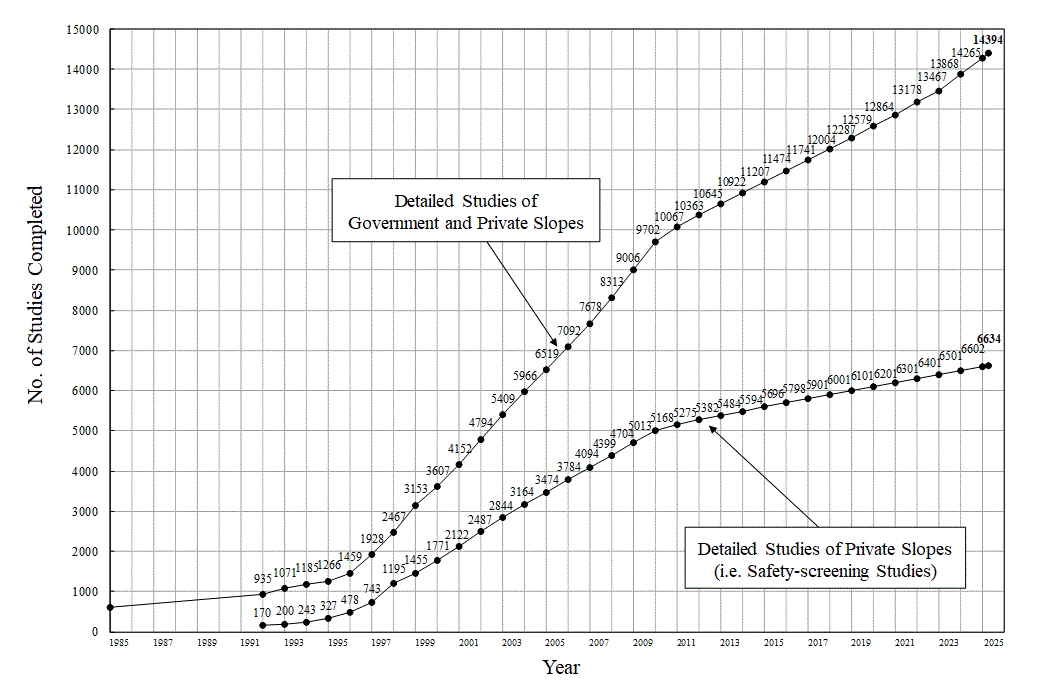
Figure 1 – Progress of Detailed Studies
Dangerous Hillside Orders Served on Private Owners
Where found necessary by a Preliminary Study or a Detailed Study, a DH Order is served by the Buildings Department on the owners of the private slopes on the recommendation of the GEO. The DH Order requires the owners to carry out certain investigation and the necessary upgrading works to the slope. A DH Order may also be recommended to be issued after a slope failure has occurred, or as a result of other stability concerns brought to the attention of the GEO. The cumulative number of slopes on which DH Orders have been served by the Buildings Department is shown in Figure 2.
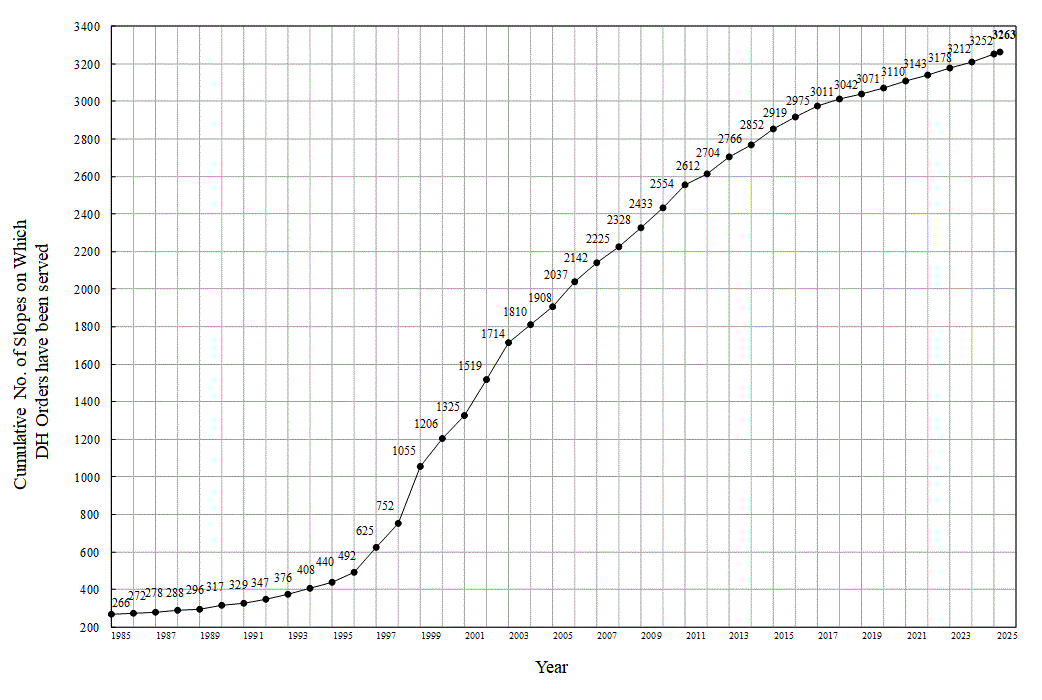
Figure 2 – Cumulative Number of Slopes on Which DH Orders Have Been Served
Upgrading Works to Government Man-made Slopes
Where Government man-made slopes are found to be below current safety standards, they are recommended for upgrading works. The selection of Government slopes for Detailed Studies and upgrading works is referred to an inter-departmental committee, the Landslip Preventive Measures Committee (LPMC) for consideration, advice and agreement. The LPMC also considers nominations for upgrading works by Government departments responsible for slope maintenance. The cumulative number of man-made slopes upgraded (including those checked to meet the current safety standards) by the GEO since 1977 and the breakdown of the number of Government slopes that were upgraded are given in Figures 3 and 4 respectively.
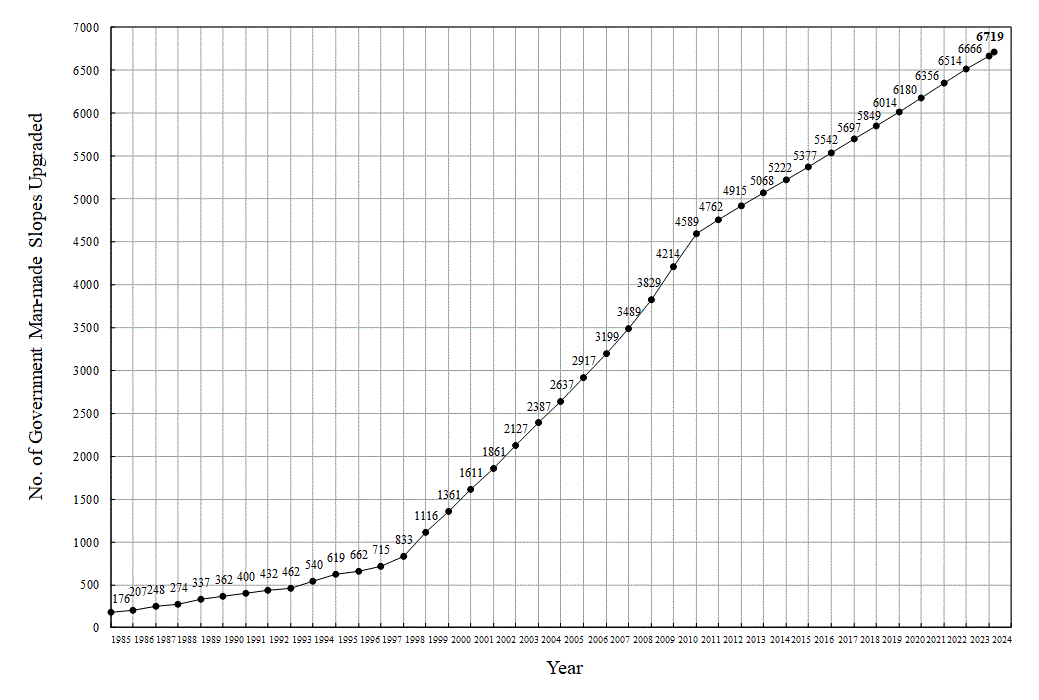
Figure 3 – Cumulative Number of Government Man-made Slopes Upgraded by GEO
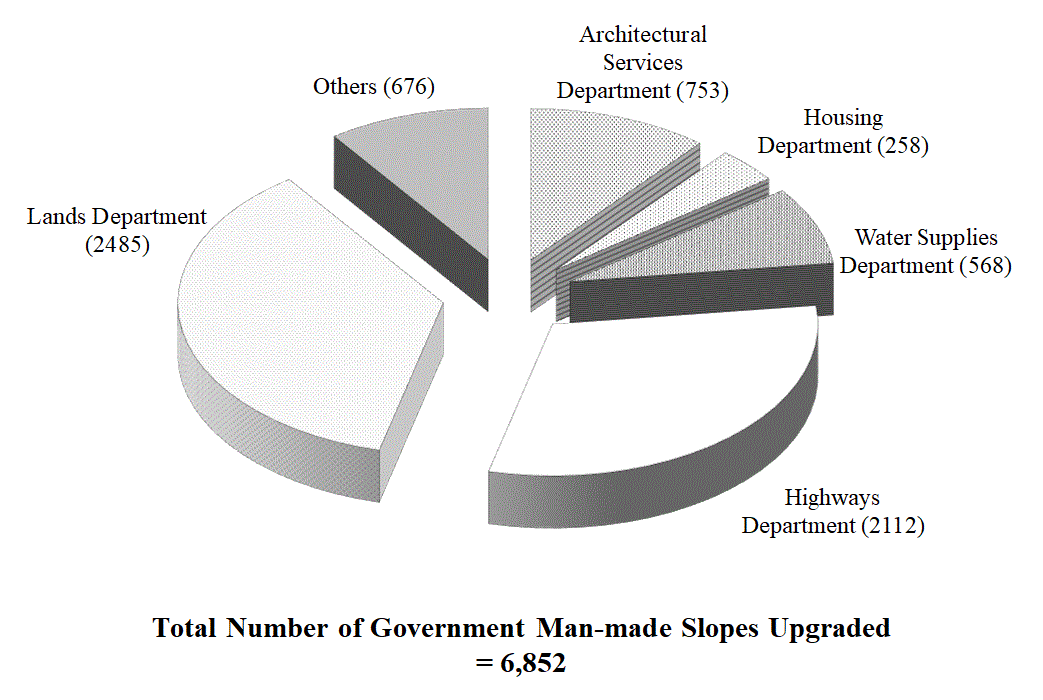
Figure 4 – Numbers of Government Man-made Slopes Under the Maintenance Responsibility of Different Government Departments Upgraded by GEO
Dealing with Landslide Risk Arising from Natural Hillsides
The GEO has identified about 3,300 natural hillside catchments with known history of failure and close to existing buildings and important transport corridors (i.e. vulnerable natural hillside catchments) from interpretation of large-scale historical aerial photographs. Unlike man-made slopes, it is generally impractical, costly and environmentally undesirable to carry out extensive slope stabilization works on natural hillsides. Instead, natural terrain landslide risk can usually be mitigated in a more cost effective manner through mitigation measures such as rigid and flexible debris-resisting barriers, which are commonly adopted in other countries. In the assessment of landslide hazard arising from vulnerable natural hillside catchments, the adjoining hillside areas that are considered as an extension of vulnerable natural hillside catchments (referred to as the related catchments) will also be studied and, if necessary, mitigation measures to the related catchments will be implemented together with the vulnerable natural hillside catchments as an integrated approach.
Upon the endorsement by the ExCo and LegCo of the inclusion of mitigation measures for natural hillside catchments in the LPMitP in late 2007, the GEO commenced the preparation work immediately, which involved studies of vulnerable natural hillside catchments and related catchments in accordance with the risk-based priority ranking system for systematic implementation of the necessary mitigation measures. The cumulative number of natural hillside catchments with mitigation measures implemented by the GEO is shown in Figure 5.
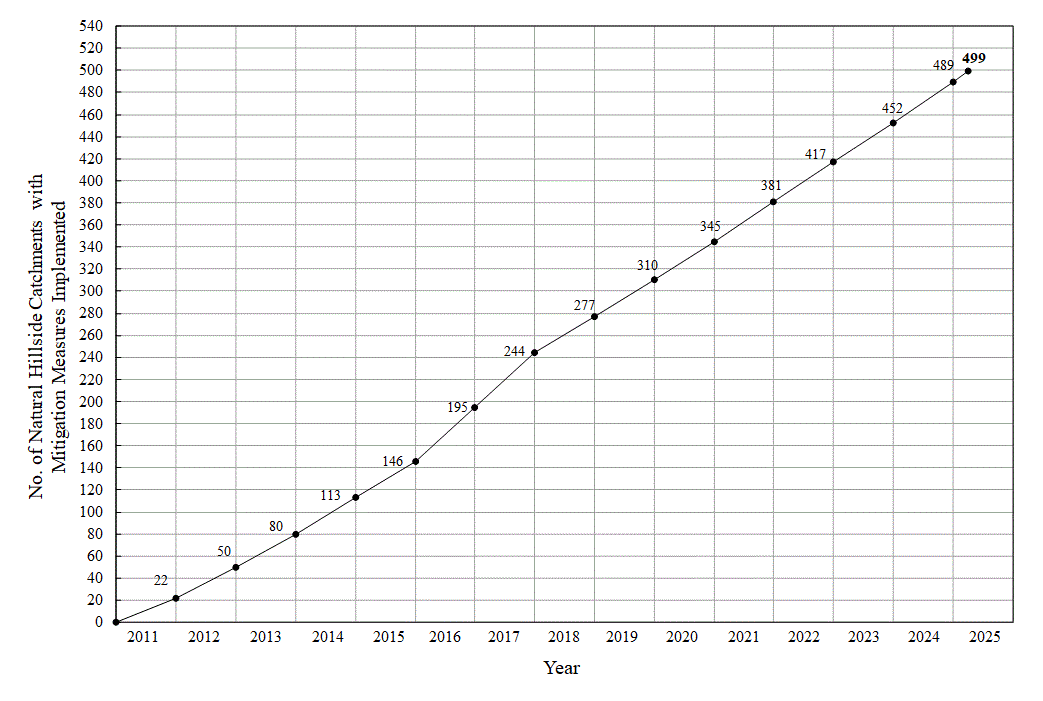
Figure 5 – Cumulative Number of Natural Hillside Catchments with Mitigation Measures Implemented by GEO
Special Studies Related to Landslip Prevention and Mitigation
From time to time, the GEO carries out special studies related to the implementation of the landslip prevention and mitigation works. These include :
-
- Mid-levels Studies (carried out between 1979 and 1981, resulting in substantial stabilization works),
- North Point Rock Slope Study (carried out between 1979 and 1981, resulting in substantial stabilization works),
- Studies of slopes affecting squatters (on-going since 1982),
- Study of slopes along some Water Supplies Department catchwaters (carried out in 1984, resulting in substantial stabilization works and squatter clearance),
- Studies of slopes affecting the Kowloon Canton Railway (carried out between 1984 and 1990, resulting in substantial stabilization works),
- Studies of Seymour Cliffs above Conduit Road (carried out in 1991 and 1992, resulting in substantial stabilization works),
- Study of slopes affecting bus shelters (carried out in 1994),
- Masonry Wall Studies (completed in 1996),
- Formulation of New Priority Classification Systems (completed in 1996),
- Quantitative risk assessment (on-going since 1993),
- Systematic Inspection of Slopes in the Territory (completed in June 1997),
- Systematic Identification and Registration of Slopes in the Territory (completed in September 1998),
- Risk Assessment of Landslides and Boulder Falls from Natural Terrain (interim risk guidelines recommended in 1998),
- Natural terrain landslide study (completed in 2000, resulting in the compilation of a landslide inventory and promulgation of guidance on assessment of natural terrain),
- Business process re-engineering on selection of slopes for LPM action (design phase completed in February 1999, trial implementation completed in February 2000 and now adopted in the LPM/LPMit process),
- Study of slopes affecting schools (carried out between 1995 and 1998, resulting in the identification of some 400 substandard private and government man-made slopes for follow-up actions which were completed in June 2000),
- Study on mitigation measures against natural terrain landslide hazards (on-going since 2001),
- Study on use of bioengineering measures to repair natural terrain landslide scars (completed in March 2007), and
- Formulation of New Priority Ranking Systems (completed in 2009).
Expenditure
So far, the GEO has spent about $30.3 billion on landslide prevention and mitigation works and studies. The cumulative expenditure since 1977 is shown in Figure 6.
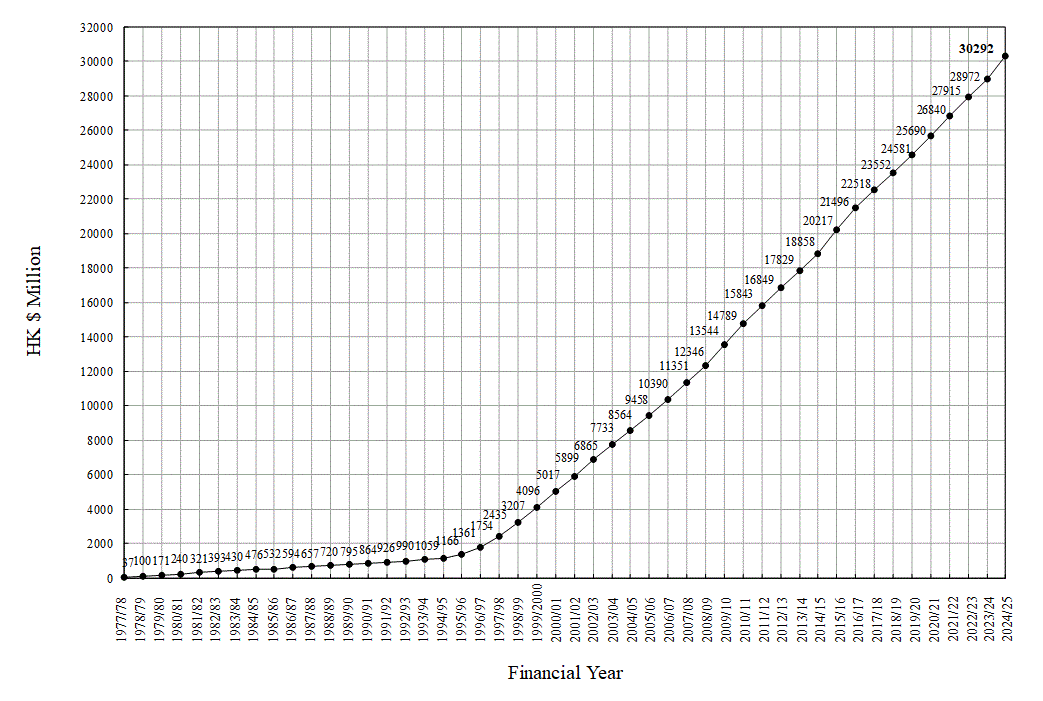
Figure 6 – Cumulative Expenditure on Landslip Prevention and Mitigation Works and Studies by GEO
Geotechnical Engineering Office
Civil Engineering and Development Department
May 2025